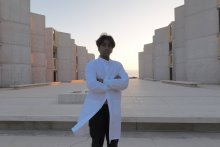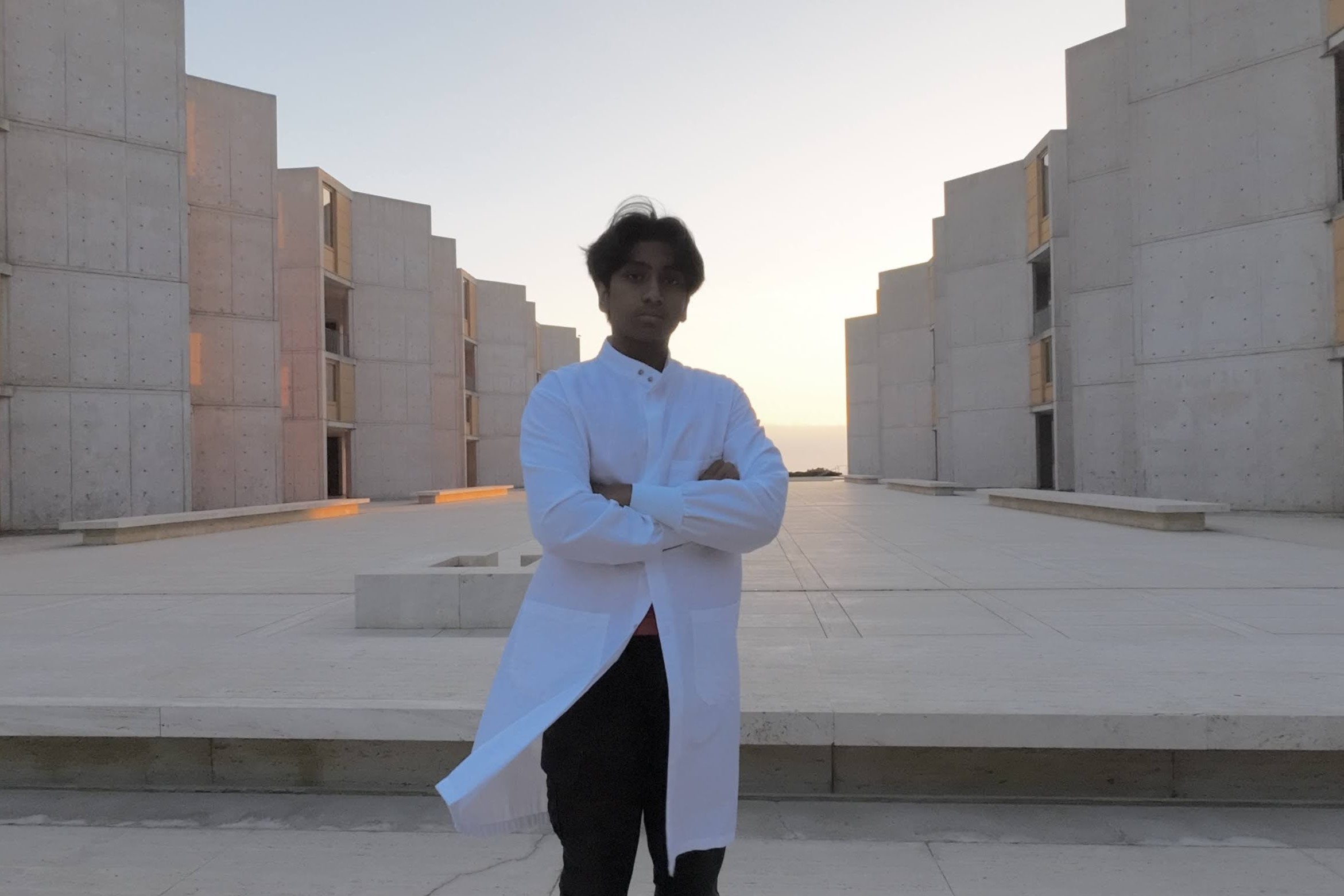371 Bloor Street West
Toronto, ON M5S 2R7 get directions
Toronto, ON M5S 2R7 get directions


This fall, UTS S6 (grade 12) student Siddhesh became one of the youngest authors ever to be published in The Journal of Immunology, with his review paper that sought to identify how subtypes of memory T cells could help engage the immune system to prevent cancer.
“It was an idea that hadn’t been explored thoroughly before and I felt there was a great deal of potential in optimizing memory T cell subtypes for the prevention of cancer,” says Siddhesh. “A lot of the time we focus on therapy much more than prevention, with cancer viewed as an inevitable disease as the stats show that two out of five Canadians will get cancer in their lifetimes.”
The daunting nature of the challenge attracted Siddhesh – he says that while scientists have made great strides forward on eliminating many other diseases, cancer remains elusive. His paper, “Memory T Cells in the Immunoprevention of Cancer: A Switch from Therapeutic to Prophylactic Approaches,” was published in September 2023.
As a review paper, it’s not original scientific research but instead synthesizing and analyzing research done by other parties. Siddhesh’s analysis looked at how subtypes of memory T cells, which remain after a body fights off a disease and are the first to attack when re-exposed to the disease, could be genetically modified to target potential malignant cells before cancer occurs. He analyzed different subtypes for how long they would work, how local they need to be targeted, how to get them to start working and effectiveness, looking at patients in remission from cancer or predisposed to it, people whose disease was discovered in the early stages, and the general population.
Getting published represents the culmination of his efforts that began in the COVID-19 summer of 2020, when Siddhesh was just 13 years old and keen to work on cancer but facing two major barriers: he didn’t have hands-on lab experience, and he couldn’t get any with the COVID shutdown.
With nowhere to go, he spent the pandemic summer deep-diving into a textbook called Kuby Immunology. “It was one of those things where I felt like I could read this forever,” he recalls. “I was waking up at five in the morning just to read it.”
He also reached out to scientists whose work he admired, such as Susan (Sue) Kaech, a professor, director and chair of the NOMIS Center for Immunobiology and Microbial Pathogenesis at the Salk Institute for Biological Studies near San Diego, with his questions.
When he finished the textbook, he kept reading the latest scientific literature available in medical journals, which he was able to access thanks to the UTS affiliation with the University of Toronto. Every UTS student gets access to U of T services, including online databases and the Gerstein Science Information Centre, the largest academic science and health science library in Canada, where Siddhesh spent many nights. At any given time, his laptop would have tabs and tabs open, and as he started M3 (grade 9) at UTS, a common thread began to emerge from his research on memory T cells that made a good idea for a review paper, which he began to write.
With school oscillating back and forth between online and in-person in the 2020-21 school year, many regular UTS activities were cancelled and Siddhesh was able to devote more time to this project, which took on a momentum of its own.
By the spring of 2021, his paper ballooned to 17,000 words and 27 pages long, and he shared it with Sue who provided encouragement and advised him to cut it down to a more typical length for a review paper, about 5,000 words. She became one of the principal investigators on the paper, along with Shane Harding, a scientist at University Health Network’s Princess Margaret Cancer Centre and an assistant professor of medical biophysics at the University of Toronto. Siddhesh connected with Shane after volunteering at the Princess Margaret Cancer Foundation event, Road Hockey to Conquer Cancer.
When Siddhesh hit a block and he couldn’t find answers to questions he needed to round out his paper, he would also reach out to scientists from around the world who wrote the articles he was incorporating. “People are so willing to help,” he says. “I felt a lot of fear that they might think of me as stupid or naïve, but I was just someone trying to learn, which is what we are all trying to do. That approach of being willing to ask when I didn't know something was really helpful.”
He also shared his work-in-progress with one of his science teachers at UTS, Alan Kraguljac, who as a former graduate student at SickKids and clinical researcher in the Mount Sinai Hospital ICU has firsthand experience with research.
Siddhesh credits UTS for giving him the skills he needed to make progress on his research: “Where are the tools? How do you use the tools? The extensive work we did in my science, history and other classes about how to access, read and be critically analytical of papers, as well as all those lessons from our Director of Library Services Ms. Choi about how to find and access the resources we need, was something very fundamental that I was taught really well at UTS.”
By the time he submitted his paper to The Journal of Immunology, Siddhesh was in S5 (grade 11) and the paper had an impressive 200 citations.

Siddhesh at the Salk Institute.
Now, Siddhesh has also realized his dreams to work in a laboratory, having spent the summer before his last year of high school in La Jolla, California, working in Sue’s lab at the Salk Institute on how to optimize various subtypes of memory T cells to live longer to fight cancer or to live in different parts of the body, and which subtypes are best for different purposes. “I was waking up every day happy, thinking I get to go to a lab – it’s just such a supportive environment where you have ideas and the resources to execute on those ideas and see where those ideas lead.”
Since his M4 (grade 10) year, he has also been working as a student researcher with Shane at Princess Margaret Cancer Centre, as well as during the summer between M4 and S5 (grade 11).
“When I first started I thought I would read the papers and then quickly write a review paper, but it didn't happen for years. It takes time. I kept pushing,” he says. “My advice to other students is don’t do something just to look good ‒ do something because you are genuinely interested and because you see it having an impact beyond yourself. My paper was about people realizing that this is a viable idea and a promising possibility in the fight against cancer.”
While working last summer at the Salk Institute near San Diego, UTS student Siddhesh conducted his own research, splitting T cells to determine the presence of a characterizing protein for a certain type of brain cancer in order to create novel targeted immunotherapies.
